Altra Superior 4.5
Test Locations: Gunnison & Crested Butte, Colorado
Test Duration (so far): 60 mi
Stated Stack Height: 21 mm (heel) / 21 mm (forefoot)
Stated Heel-to-Toe Drop: 0 mm
Stated Features:
- Insole: 6 mm Contour Footbed with removable StoneGuard
- Midsole: lightweight and responsive Quantic with InnerFlex grooves
- Outsole: sticky MaxTrac rubber with TrailClaw tread pattern
- Updated seamless wrap-around engineered knit upper for improved fit, durability, breathability, and drainage
MSRP: $110.00
Size Tested: US Men’s 11.5
Stated Weight per Shoe (US Men’s Size 9): 252 g / 8.9 oz
Blister Measured Weight per Shoe (US Men’s Size 11.5):
- Without StoneGuard: 263 g / 9.3 oz
- With StoneGuard: 295 g / 10.4 oz
Reviewer: 6’1”, 145 lbs
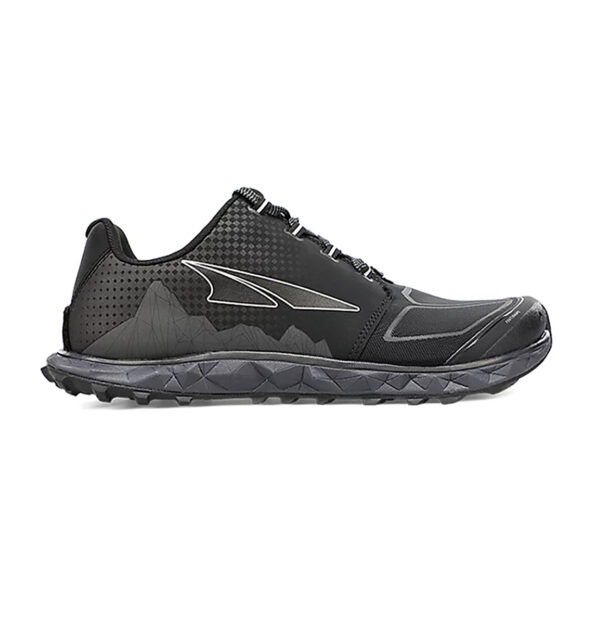
Intro
Sometimes when brands update a shoe, the new version is so different from the old one that it seems like a bit of a stretch to call it the same shoe. And other times, the new version of a shoe is so similar to the previous version that it’s kind of questionable to even say it’s an update.
For better or for worse, the Altra Superior 4.5 definitely falls into the latter category. I reviewed the Superior 4.0 last year, and I honestly had a bit of a hard time telling what Altra changed for the Superior 4.5 when I first took it out of the box. There are some subtle visual and design differences, which I’ll get in to later in the review, but for the most part, the two shoes look very similar.
My main question about the Superior 4.5 was whether or not the small tweaks that Altra did make managed to address some of the shortcomings of the previous version of the shoe. As you may recall from that review, the Superior 4.0 fell squarely into the first category of shoe updates — really the only things it had in common with version 3.5 were the stack height and the name. While I liked the very comfortable, accommodating fit of the Superior 4.0, I also felt like it wasn’t quite as secure as I would’ve liked on technical terrain. I also thought it was a little lacking in the energy return department, especially for a shoe that’s marketed as a “trail racing” model.
So does the Altra Superior 4.5 fare any better than its predecessor at faster paces or on technical terrain? After about 60 miles in the Superior 4.5, I’ve got a pretty good sense of how it compares to version 4.0 and to other similar shoes — and where it might fit in your trail-running shoe lineup as a result.
Altra Superior 4.5 vs. Superior 4.0
As I said above, not much has changed in the latest version of Altra’s lowest-stack-height, all-round trail shoe. The Superior 4.5 features the same 21mm-thick Quantic midsole, MaxTrac rubber outsole, and TrailClaw tread pattern as the Superior 4.0. The upper has the same basic design as the previous version, but with a few minor changes that Altra claims will improve its fit, breathability, durability, and drainage.
First and foremost, the more fabric-like knit mesh used for the forefoot of the Superior 4.0 has been replaced by a more open, traditional-looking mesh material. The midfoot and heel cup still use the same thicker, synthetic suede material found on version 4.0. Aside from the new mesh material, the Superior 4.5 also has a slightly simplified lacing system that does away with the extra eyelet at the top of the tongue.
Altra also seems to have slightly altered the fit / sizing of the Superior 4.5 relative to previous versions of the shoe — more on that in the “Fit” section. All told, the Superior 4.5’s updated upper adds 28 g / 1 oz to the weight of each shoe. I was honestly kind of surprised to see that big of a weight increase between the 4.0 and the 4.5 — especially since they seem so similar. But I still think that it’s not always a bad thing when the new version of a shoe gets heavier, as long as the changes resulting in the extra weight are actually doing something useful (more on that later).
Fit
As with any shoe, it’s a good idea to try on the Superior 4.5 in person before buying if possible. With that in mind, I can give an overview of how it fits my feet, relative to previous versions of the shoe. For reference, I have fairly narrow, low-volume feet with low arches. I tend to get along well with shoes that provide a snug, secure fit through the heel and midfoot without smashing my toes together in an overly narrow / pointed toe box.
The most significant and important difference I’ve noticed between the Superior 4.0 and 4.5 is sizing. I’ve worn a US Men’s size 11.5 in every Altra shoe I’ve ever used — but in the Superior 4.0, an 11.5 felt a tad big. The Superior 4.5 fits much more true to size. If anything, my 11.5’s feel slightly short. So while it might have been a good call to size down a half size from your usual for the Superior 4.0, I definitely wouldn’t recommend doing the same for the 4.5.
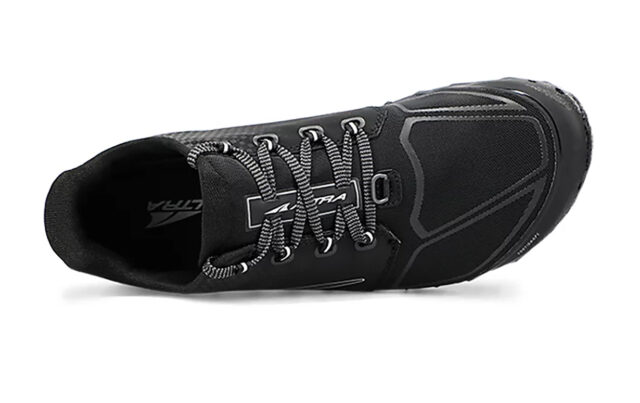
Aside from sizing, the overall fit of the Superior 4.5 feels very similar to that of version 4.0 (no surprises there). The 4.5’s entire upper is very soft and flexible, which makes for a very comfortable, almost slipper-like feel. The Superior 4.5 definitely has a lower-volume fit than the Altra Lone Peak 4.5 or Olympus 4 — the Superior 4.5 fits much more similarly to the Altra Timp 2.0 (which is to be expected, since the Timp and Superior are reportedly built on the same last). As with both the Timp 2.0 and Superior 4.0, the Superior 4.5’s midfoot and heel cup feel reasonably secure for my narrow / low-volume feet with the laces cranked down. But as with the previous version of the shoe, the Superior 4.5’s lack of any rigid heel counter or midfoot overlays allows my feet to slide around in the shoe on particularly steep, off-camber terrain.
Like all Altra shoes, the Superior 4.5 has a wider, more rounded toe box than more “traditional” shoes like the Salomon Sense 4 /Pro or La Sportiva Lycan II. The extra toe space is always one of my favorite features of Altra’s shoes, and the same is true for the Superior 4.5. My toes always feel like they have plenty of space to spread out, and so far, I haven’t had any issues with blisters or rubbing as a result.
One of my complaints about the Superior 4.0 was that the lacing system was shorter than most shoes — it only had four eyelets instead of five and ended higher up on the midfoot (rather than close to the toes), which made it tough to get as secure of a fit through the midfoot as I’d prefer. Regrettably, the Superior 4.5 has pretty much the same design — Altra did tweak the lacing system slightly, but they just got rid of the extra eyelets at the top of the tongue (which, for the record, I didn’t think were very useful / necessary). So as with the previous version, I still feel like I can’t lock down the forward-most part of the Superior 4.5’s midfoot as much as I’d like to.
Zero Drop
You’ve probably heard this before, but it is worth emphasizing that the Superior 4.5 is a “Zero Drop” shoe, which just means that the midsole is the same thickness in both the heel and forefoot (rather than having a heel that’s thicker / taller than the forefoot).
Generally speaking, zero-drop shoes tend to favor a forefoot strike — especially low-cushion, zero-drop shoes like the Superior 4.5. While many runners (myself included) enjoy that style of running, it can put more strain on your calves and Achilles tendons if you’re used to running in a higher-drop shoe (which typically encourage more of a heel-striking style). So if the Superior 4.5 will be your first foray into the zero-drop realm, it’s a good idea to transition into it slowly to avoid hurting yourself.
Weight
While it is heavier than the previous version of the shoe, the Superior 4.5 is still a pretty light shoe in the grand scheme of things. For reference, here’s how the Superior 4.5’s stated weight compares to some lightweight / low-stack-height trail shoes from a few other brands (all stated weights are based on a US Men’s size 9):
193 g / 6.8 oz — ARC’TERYX Norvan SL
198 g / 7.0 oz — Salomon S/Lab Sense 8
207 g / 7.3 oz — New Balance MT10 v1
210 g / 7.4 oz — La Sportiva Helios III
224 g / 7.9 oz — Altra Superior 4.0
252 g / 8.9 oz — Altra Superior 4.5
255 g / 9.0 oz — Merrell MTL Skyfire
258 g / 9.1 oz — Hoka One One Torrent 2
258 g / 9.1 oz — Saucony Switchback 2
261 g / 9.2 oz — ON Cloudventure Peak
272 g / 9.6 oz — Salomon Sense 4 /Pro
306 g / 10.8 oz — Topo Athletic Terraventure 2
The Superior 4.5 falls into somewhat of a middle ground as far as weight is concerned. It isn’t as light as truly minimal, stripped-back, race-specific shoes like the Salomon S/Lab Sense 8, but it is lighter than more moderate-cushion shoes like the Hoka Torrent 2 or Salomon Sense 4 /Pro. In my experience, the Superior 4.5 feels plenty light on the trail.
With that said, the Superior 4.5 is reportedly 28 g / 1 oz heavier than the previous version of the shoe. As I’ve said, I think you can make a good argument for adding weight to a shoe as long as that extra weight is doing something useful. If the Superior 4.5 had a much more secure fit or much more energetic cushioning than the previous 4.0, I wouldn’t think twice about that extra ounce (since those were my two main complaints about the previous shoe). But honestly, the Superior 4.5 feels pretty much identical to the Superior 4.0 in most respects — so why is it an ounce heavier?
That might seem like a pretty minor amount of weight to be ranting about so much, but I think it is worth considering, particularly for a race-oriented shoe. It’s not as if the Superior 4.5 feels like a brick compared to the previous version of the shoe — it still feels very light on the trail. Regardless, I think it’s frustrating when lightweight, race-oriented shoes add any amount of weight in a new version if that extra weight isn’t somehow improving the shoe’s performance. In the case of the Superior 4.5, I don’t think that it is. This may not be a big deal at all for some runners, but that’s my take.
Upper
The Superior 4.5 has a very similar upper to the Superior 4.0, with the exception of the material used for the toe box. Like the 4.0, the Superior 4.5 has a fairly thick synthetic material that wraps around the heel and midfoot. The toe box uses a much lighter, more open mesh material. The “burrito-style” tongue is just a continuation of the upper fabric that wraps from the inside of the lacing system to the outside of the midfoot. As with the 4.0, the 4.5 has a burly rubber toe bumper to prevent toe carnage on rocky terrain.
As with the previous version, the Superior 4.5’s upper feels very soft, comfortable, and unstructured. There’s plenty of “give” in just about every part of the upper, which allows it to stretch a bit and conform to your foot. This contributes to the shoe’s very minimal, flexible feel. That’s great if you’re into that sort of thing (and / or have a wider foot), but might feel a bit sloppy if you’re used to a more structured shoe like the Salomon Sense 4 /Pro.
Altra says that the more open mesh material used on the Superior 4.5’s toe box improves the shoe’s breathability and drainage relative to version 4.0 — and I think they’re spot on in that respect. While it wasn’t overly problematic, the denser mesh used on the Superior 4.0 did seem a bit less breathable than the more traditional mesh used on most other shoes. It also seemed to hold water a bit longer after creek crossings. As advertised, the Superior 4.5 feels noticeably more breathable, and drains much faster than the previous version of the shoe, thanks to the more open mesh material used on the toe box.
Midsole
I wasn’t a huge fan of the Superior 4.0’s Quantic midsole, and the Superior 4.5’s midsole is reportedly exactly the same — so I didn’t really expect to be blown away by it. But in retrospect, I think that the Superior 4.5’s midsole fits pretty well with the overall design of the shoe. Altra’s Quantic foam doesn’t feel quite as springy and energetic as the A-Bound midsole foam that preceded it in the Superior 3.0 and 3.5, but the Quantic foam is extremely light and extremely flexible.
Initially, I didn’t like that tradeoff, since it makes the Superior 4.5 feel much less energetic and protective than shoes like the Salomon Sense 4 /Pro, which has a similar average stack height (21 mm heel / 17 mm forefoot) but much firmer cushioning. With that said, the Superior 4.5 provides much more ground feel than the Sense 4 /Pro and is way more flexible. So if you’re looking for a light, flexible shoe that lets you feel the trail while still providing a little bit of cushion, the Superior 4.5’s midsole will probably feel great. Just be aware that the Superior feels less cushioned / protective than most other shoes with similar stack heights.
Outsole
The Superior 4.5’s outsole uses Altra’s sticky MaxTrac rubber with mid-sized, widely spaced lugs. The Superior 4.5 is supposed to be an all-round shoe, and I think its outsole does a good job of supporting that goal.
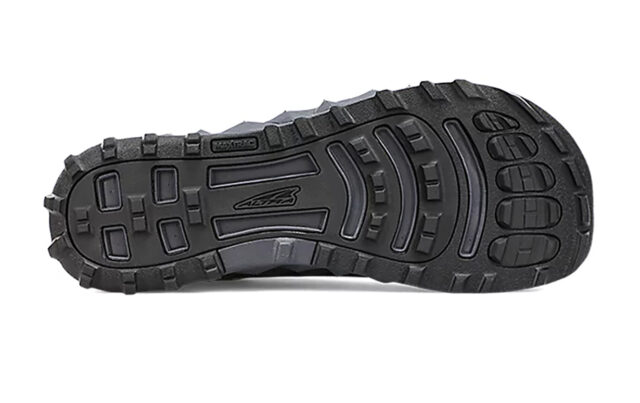
The Superior 4.5’s outsole has provided plenty of traction on dry, rocky terrain, and fares pretty well on wet rocks and roots as well. The Superior 4.5 still slips a little on loose gravel / sand and in deeper mud — but so do the vast majority of other all-round trail shoes. As long as you’re not running through swamps all the time, the Superior 4.5 should provide plenty of traction.
On The Trail
Over my first 60 miles in the shoe, I’ve used the Superior 4.5 on a variety of terrain around Gunnison and Crested Butte, ranging from flat pavement to steep, off-trail scree. So far, most of my runs in the shoe have been in the 1 to 1.5-hour range. As I’ve said many times in this review, the Superior 4.5 is very similar to the previous version of the shoe — so it shouldn’t come as too much of a surprise that it feels very similar on the trail as well.
For my preferences, the Superior 4.5 feels best suited for moderately paced runs on smoother, less technical terrain. While it does feel extremely light and nimble, the Superior wouldn’t be my first choice for faster interval workouts because of its fairly soft cushioning. The Superior 4.5 doesn’t necessarily feel like it’s slowing me down when I pick up the pace, but it also doesn’t feel as energetic and “propulsive” as a firmer shoe like the Salomon S/Lab Sense 8. With that said, the Superior is much more comfortable than a firm shoe like the S/Lab Sense 8 for slightly longer, more moderate runs thanks to its wider fit and softer ride.
On technical terrain, the Superior 4.5 struggles a little, relative to other similar shoes, for the same reasons that the 4.0 did. The Superior 4.5’s soft, unstructured upper feels great on even / smooth terrain, but it allows my feet to slide around quite a bit on steep, uneven, or off-camber trails. The Superior 4.5’s excellent ground feel also means that you’re going to notice if you land wrong on a particularly sharp rock. Its removable StoneGuard rock plate does help dull impacts a little, but it doesn’t change the fact that the Superior 4.5 isn’t a particularly protective shoe.
As I’ve said before, the Superior 4.5 feels almost like a slipper compared to the secure, locked-down fits of shoes like the Salomon S /Lab Sense 8 or La Sportiva Kaptiva. That’s great for cruising buffed-out single track and / or if you have a higher-volume foot than I do, but a pair of slippers definitely wouldn’t be my shoe of choice for bombing down a scree field — and neither would the Superior 4.5.
Durability
I’ll update this section once I’ve had a chance to put more miles on the Superior 4.5, but after the first 60 miles, it seems to be holding up well for the most part. There is a little bit of wear showing on the lugs near the front of the forefoot, which is a little surprising after only 60 miles of use. I’ve noticed on other shoes that Altra’s MaxTrac rubber seems to wear down a bit faster than some other brand’s outsole compounds, and unfortunately, that seems like it might hold true for the Superior 4.5 as well. Though, this is typically a tradeoff you need to make with outsoles: durability or traction.
Aside from the outsole, the Superior 4.5 looks and feels the same way it did out of the box. I did run into some issues with the Superior 4.0’s toe box blowing out prematurely, so I’ll be curious to see how the new material used in the 4.5 holds up in the long run. Altra claims that the Superior 4.5’s upper is more durable than the previous version, and it certainly seems to be holding its own so far — time will tell.
Who’s It For?
I used the older Superior 3.0 for pretty much everything, from short interval workouts to ultra-distance races on technical terrain. In my opinion, the changes Altra made for version 4.0 made the Superior a much less versatile shoe — and the same is true for the Superior 4.5. With that said, I think the lighter, softer, more flexible design of the Superior 4.0 and 4.5 could be exactly what you’re looking for if you like truly minimal-feeling shoes.
Personally, I’d like the Superior 4.5 more if it had a firmer, more energetic midsole, and also if it let me get a more locked-down fit for my low-volume feet. But if you’re looking for a shoe that offers more ground feel and flexibility than most other options on the market, the Superior 4.5 could be a great option. It’s one of the few shoes (that I can think of, anyway) that still feels like a truly minimal, barefoot-inspired trail shoe.
Bottom Line
As it turns out, my initial impression of the Altra Superior 4.5 when I pulled it out of the box was pretty accurate — not much has changed. If you liked the Superior 4.0, I expect you’ll like version 4.5 as well. And if you liked pretty much everything about the Superior 4.0 but wanted it to breathe better and dry faster, you’ll likely prefer the Superior 4.5 even more.
Personally, I’m still keeping my fingers crossed that the Superior 5.0 will have a more secure fit and slightly firmer cushioning. But for the time being, I think the Superior 4.5 is worth a good look if you’re seeking a light, flexible, barely-there shoe that offers a little more cushion and protection than going with a true “barefoot” shoe (or literally going barefoot).

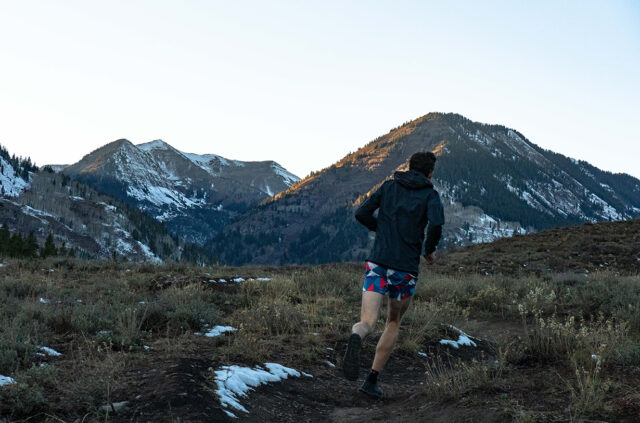
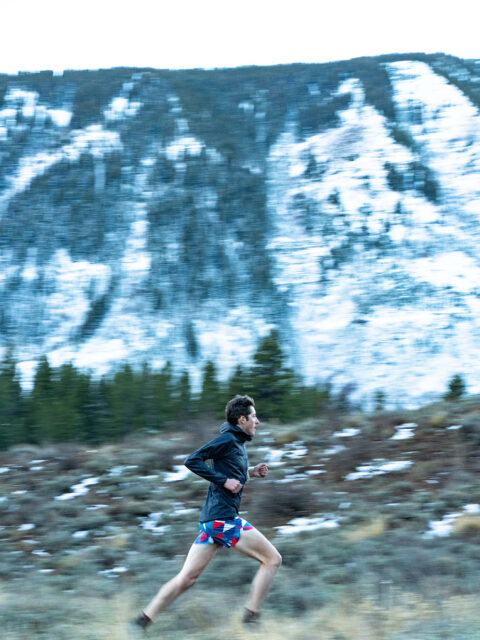

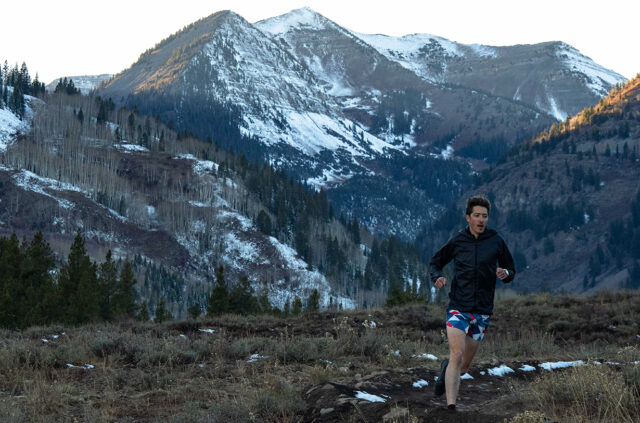
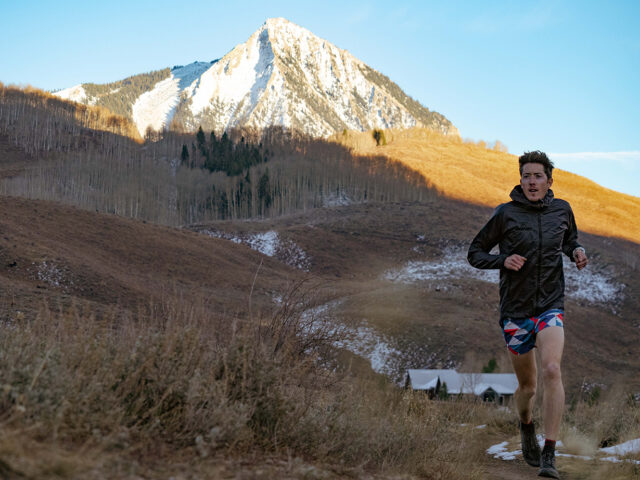
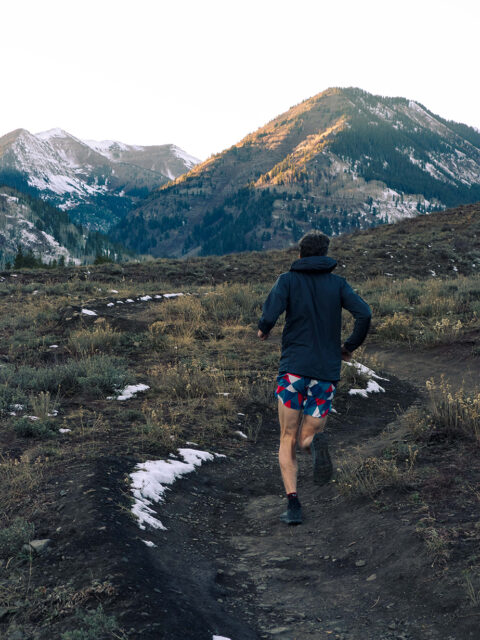
I hope the future superior 5.0 gets a wider midfoot compared to the 4.5!